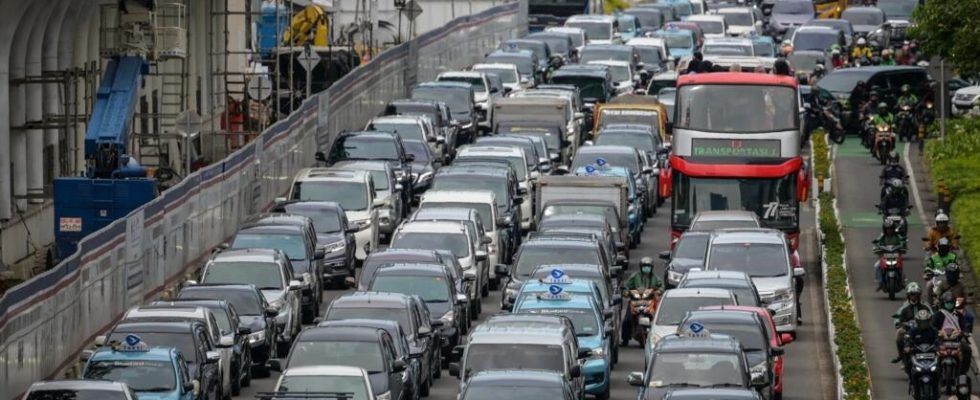In Indonesia, work is already well underway. The president persists and signs, next August, the country changes capital. Located 1,500 km apart, Nusantra, on the island of Borneo, will therefore replace Jakarta, located on the island of Java. Airports, roads, highways, seaports, President Joko Widodo promises more practical and more ecological transport. At the heart of this news, the geographer Rémi Desmoulière, one of the few French specialists in Indonesia. His book : ” Getting around in the metropolises of the south »has just been released by Karthala editions.
RFI: You have criss-crossed Indonesia, Jakarta is one of the most polluted capitals in the world, saturated with road traffic. Will this change of capital (Jakarta to Nusantara) relieve the country?
Remi Desmouliere : Above all, this will create a new need for transport to serve the new capital city, Nusantara. An airport is under construction on this east coast, in the middle of the forest, on the island of Borneo. Devices will be needed. It takes nearly two hours by plane to connect the two cities. But I do not think that the configuration of the country will be upset. Jakarta will remain a gigantic and polluted city.
It is still planned to transfer 25,000 civil servants from Jakarta to Nusantara.
There is no choice. Jakarta is a polluted city plagued by floods. The sea level is rising. But all these threats accelerated by climate change are not the only reasons for the change of city.
You say that there is not only one choice related to pollution, you underline the symbolic dimension of this change of capital.
Absolutely. There is a strong symbolic charge and a geopolitical reason. President Joko Widodo wants to give an idea of a central national territory, not a regional one. Borneo island where the capital Nusantara is built is more central on the Indonesian territory. The island of Java where Jakarta is located being a more remote city.
The Indonesian government says it wants to build everything at once. Highways, ports, airports for a booming and greener country.
Several events were marred by the transport problem. In 2018, road congestion hampered the smooth running of the Asian Games. In 2015, travel was difficult during the Asia-Africa Summit. The Indonesian media also highlight the difficulties at the end of Ramadan when families return home at the same time.
Your transport experience has proven it to you, you say that Indonesia is a country where walking does not exist. The distances between cities are too long. It is a country designed for the plane and the car.
Yes. Indonesia is an archipelago, a country made up of a group of islands. The territories are therefore remote, no possibility of building bridges of hundreds or thousands of kilometers. Transport is therefore essentially road (cars, mopeds, etc.) and aviation to reach other remote islands.
The train ?
It all depends on the place. Java, where the current capital Jakarta is located, is well equipped. In addition, there is a modern line which is planned to connect the extremities of the island. But in general, the railway network is poorly developed in Indonesia. There are a few lines inherited from the colonial period (1816-1942) but the journeys are not as convenient as by road. As for boats, they exist for goods and the transport of people. But again, it is not as busy and developed as the road.
There is the metro in Jakarta, what other modes of public transport?
Minibuses, rickshaws called Bajaj, but also motorcycle taxis. For twenty years, the 2000s, there has been a more proactive policy to develop public transport. This public transport policy is supported by the so-called informal economy. Small private companies, this is the case for small motorcycles.
You appreciate one of the novelties in terms of public transport, the high-level service bus.
Perfectly. It is a bus system capable of transporting hundreds of passengers. They travel on lanes only – even if in fact this is not always respected – reserved for these buses. Their particularity is to have stations outside the roadway, a bit like tram stations, which allows more fluid traffic.
Are these buses running on reserved lanes the same as in South America, as there are in Bogotá, Colombia?
Absolutely. They are inspired by Latin American models. These high-level service buses also exist in Brazil in Curitiba. But for the moment, only Jakarta is equipped with it. Inequalities in transport between the capital and other major cities are still significant.
If we had to sum up transport policy in Indonesia, it is to say that there are no good and unique solutions. On the one hand, we are going to develop the plane to reach this new capital and on the other, we are developing public transport.
Yes, given the geography of this fragmented country, fragmented into several islands (18,000), and given the number of inhabitants, the boats, the ferries will continue to exist, but they are slow. Only passengers with the lowest incomes take them regularly. The plane will therefore be part of the future of Indonesian transport, it is essential.
